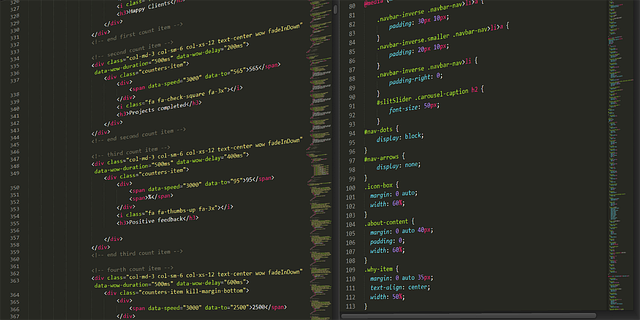Have you ever engaged with a piece of software that was difficult to navigate and frustrating to use? Does the end user’s experience ever truly factor into the development process of such software? What could change if companies concentrated on creating applications with the user in mind? These are some thought-provoking questions that come to mind when considering software development and user experience.
The vital predicament lies in a frequent lack of user-centrism in software crafting. According to a study published by the Project Management Institute, less than 60% of projects meet their original goals and business intent, which often result from a lack of end-user involvement and consideration during the development phase. Moreover, as per another survey by Forrester Research, around 70% of projects fail due to a lack of user acceptance. Hence, it becomes clear that user-centric design is not an elective aspect, but a necessary factor for success in the American software market. The proposal to tackle this issue includes significantly more emphasis on the user engagement and experience during the software’s development.
In this article you will learn about the various development companies that are putting users first and crafting software around their needs instead of just pushing out updates and patches. We will be discussing what user-centric design truly means, and how these companies incorporate it into their development process.
Largely, this overview will provide in-depth insights into how to transform a traditional software development model into one that prioritizes users’ needs. By understanding the significance of user-centric design, software companies can deliver more efficient, efficient, and enjoyable user experiences.

Definitions and Understandings of User-Centric Design Companies
User-Centric Design is a term used in software development which means designing software applications with the users’ needs, desires, and capabilities kept at the forefront.
Software Development Companies, which are businesses that create and sell software products, are increasingly focusing on User-Centric Design as a means to improve user experiences with their software. They recognize that a program that is easier to understand and use is more likely to be successful.
User Experience (UX) is a term that covers how a person feels when interacting with a system, whether it’s a website, desktop software or a mobile application. UX tackles aspects like usability, design, and users’ interaction.
Unravelling the Importance of User-Centric Design in Modern Software Development Companies
The Pivotal Role of User-Centric Design
As technology evolves and becomes more complex, software development companies are realizing the significance of user-centric design in the creation of their products. User-centric design is a design philosophy that prioritizes the needs, wants, and limitations of end-users at every stage of the software development process. The focal point of this design approach is to create a product that offers an enriching user experience (UX), fostering a more meaningful connection between users and technology.
In the traditional development lifecycle, a software product’s usability was often an afterthought, seen only as a feature. However, with user-centric design, usability becomes an integral part of the whole development process. This intrinsic focus on usability enhances the value proposition of software, making it more accessible, engaging, and enjoyable for users of all demographics and technological proficiency.
Impacting Software Development Landscape
User-centric design has substantially reshaped the software development landscape. For one, it has necessitated a broader shift in the methodologies and skill sets traditionally employed in software development. With the increasing significance on user needs, project teams have had to expand their skills beyond just technological proficiencies to include UX research, user testing, and prototyping. Secondly, it has led software companies to foster a culture of collaboration and open communication, ensuring user needs are constantly articulated and understood by all stakeholders.
Moreover, this approach has brought about a sense of empathy in developers as they strive to understand their users on a deeper level, leading to tailored software solutions that resonate with the end-users. Lastly, by prioritizing user experience, companies are more likely to develop successful products, as satisfied users can become brand ambassadors, positively influencing the company’s market presence and profitability.
- User-centric design has redefined the key skills necessary in software development, encouraging teams to include UX research, user testing, and prototyping.
- It has instigated a culture of collaboration and open communication to better debate and articulate user needs.
- Embedding empathy in the development process has led to tailored solutions that strike a chord with the end-users.
- Products developed with the user in mind generate more satisfied users, resulting in numerous indirect benefits like increased brand visibility, customer loyalty, and ultimately, achieving the bottom-line goals.
In summary, user-centric design is redefining not only the products created by software development companies but also their internal practices and mindsets. By placing the user at the heart of their development processes, these companies are resulting in products that are not only technologically advanced but also deeply resonate with the users they serve. This profound shift in approach is positively impacting the software development landscape, making it more inclusive, empathetic, and ultimately, successful.
Breaking the Mold: How Software Development Companies Utilize User-Centric Design to Elevate User Experience
The Paramount Importance of a User-Centric Approach
Is software development more about building algorithms and lines of code or bridging the gap between a complex technology and an end-user? Astoundingly, the focus of leading software development companies has been shifting towards the latter approach – creating stunning user experiences via user-centric designs. Many tech giants have identified the critical correlation between a user-friendly, intuitive interface and an enhanced user adoption paired with business profitability. It is increasingly being realized that a user-centric approach, which prioritizes the needs and expectations of the user at every stage of the development process, is not just a passing trend but a transformative development approach that can unlock immeasurable success for a company.
Addressing the Prevailing Issues
The principal obstacle that tends to shadow software development is the chasm between developers’ understanding of usability and the users’ actual requirements. Developers, occupied with handling complex algorithms and codes, sometimes fail to communicate effectively with users or comprehend their expectations. User interface and experience then become auxiliary, promoting underdeveloped designs that hardly align with the users’ instinctive interactions. This disconnection results in low user adoption, negative user feedback and loss of potential business opportunities. Hence, companies are embracing the user-centric design approach, bridging the abyss that traditional development methods have failed to address.
Success Stories: Implementing User-Centric Design
Numerous industry-leading software companies have successfully adopted a user-centric design approach. A notable example is Google, who has employed a user-focused blueprint not just in their flagship search engine, but also a range of products including Gmail, Google Maps, and Google Docs. By emphasizing accessibility, ease of use, and simplicity in design, Google’s products have acquired a vast user base. Another success story is Apple, defined by its seamlessly intuitive and elegant user interfaces. For instance, the iPhone’s direct manipulation user interface with multi-touch gestures like swipe, tap, pinch, and reverse pinch has revolutionized the smartphone industry and set the bar high for user experiences. These cases reiterate the power of user-centric design and underscore its indispensable role in deciding a product’s success in a highly competitive tech market.
Transforming Digital Landscapes: The Dynamic Role of User-Centric Design in Software Development Companies
The Imperative of a User-Oriented Approach
Why should businesses invest in creating a user-centric design for their software? The answer lies in understanding modern consumer behavior. Today’s consumers, whether they are businesses or individuals, expect easy interactions with technology. They want intuitive controls, responsive design, and quick access to the information or functionality they need. In this context, user-centric design is no longer just a nice-to-have feature—it’s a fundamental success factor. A software is effectively useless if its end users can’t navigate or use it effortlessly. This user-oriented approach to design not only impacts the usability of the software but also directly influences the brand perception and customer loyalty.
Rectifying the Prevalent Challenge
Unfortunately, many software developers still focus on technical robustness and the inclusion of diverse features over the user experience. This myopic approach disregards the fact that end users often appreciate simplicity and efficiency over complexity. A software packed with features but lacking an intuitive user interface ends up frustrating users, leading to abandonment and negative perception of the brand. This problem is exacerbated when developers do not involve end users in the design process and fail to guide them through the user journey, resulting in a lack of understanding of user needs, preferences, and behaviors.
Successful Implementations of User-Centric Design
Despite these challenges, numerous tech companies have successfully integrated user-centric design into their development process. One such example is Slack, a leader in business communication tools. They have created a very intuitive and user-friendly interface, where users can easily communicate with their team, share files, and integrate with other applications. Their simple yet powerful design has resulted in a growing user base and a brand that people trust and enjoy using.
Another example is Airbnb, which revolutionized the travel industry with its peer-to-peer home sharing platform. The company’s success can largely be attributed to its focus on user-centric design. The platform’s intuitive user interface makes it easy for users to search for accommodations, book their stay, and communicate with hosts – all these functions essential to the smooth user experience. By adopting a user-centric design, Airbnb has managed to create a platform that both hosts and travelers find easy to use, leading to a high level of user satisfaction and loyalty.
Conclusion
Aren’t we all entitled to software that not only meets our requirements but also gives us an immersive, user-friendly experience? Without a doubt, the shift towards a user-centric approach by software development companies is a giant leap in the right direction. It’s instructive to see that businesses now recognize the importance of understanding their customers and building intuitive interfaces that promote interaction and satisfaction. This practice, undoubtedly, is fostering an era where software is more meaningful, personalized, and genuinely user-oriented.
We hope you’ve found this piece insightful, and it inspires you to patronize software development entities who place a premium on user experience. Our blog continues to shed light on such pertinent topics, making it a valuable resource for staying ahead of the curve in this digital age. It is indeed humbling to have you follow our updates and tap into our trove of well-researched information crafted just for you.
In conclusion, watch for our upcoming posts. Our team is persistently researching and updating to ensure we deliver top-notch, current material to enhance your tech awareness. Remember, the world of software development is an ever-evolving one, with new trends springing up now and then. As such, it’s paramount to stay abreast of these changes, especially as they pertain to user experience. Your continued interaction, inputs, and support fuel us to aim for better content delivery every time. Thanks for sticking with us, and please continue to look forward to more illuminating releases from our stable.
F.A.Q.
1. What is user-centric design?
User-centric design is a design philosophy that puts the needs, preferences, and context of a user at the forefront of design decisions. It’s about understanding and addressing user problems, needs and objectives throughout the entire design process.
2. Why is user-centric design important for software development companies?
User-centric design is crucial for software development companies because it drives the development of a product that is not only functional but also enjoyable and easy to use. Ensuring a high-quality user experience encourages customer loyalty and ultimately drives business success.
3. Can user-centric design influence the success of a software product?
Yes, user-centric design significantly influences the success of a software product. With an emphasis on user experience, user-centric designs create products that are intuitive, easy to use, and meet the user’s needs, leading to customer satisfaction and product success.
4. How do software development companies incorporate user-centric design?
Software development companies incorporate user-centric design by researching and understanding their users’ needs, prototyping, testing, and iterating on their designs. This could typically involve stages like user interviews, usability testing, user journey mapping, and more.
5. What are some examples of a user-centric software product?
Examples of user-centric software products include popular apps like Airbnb, Slack, and Uber. These products prioritize user experience with simple, easy-to-navigate interfaces and features that directly meet the needs of the users.


